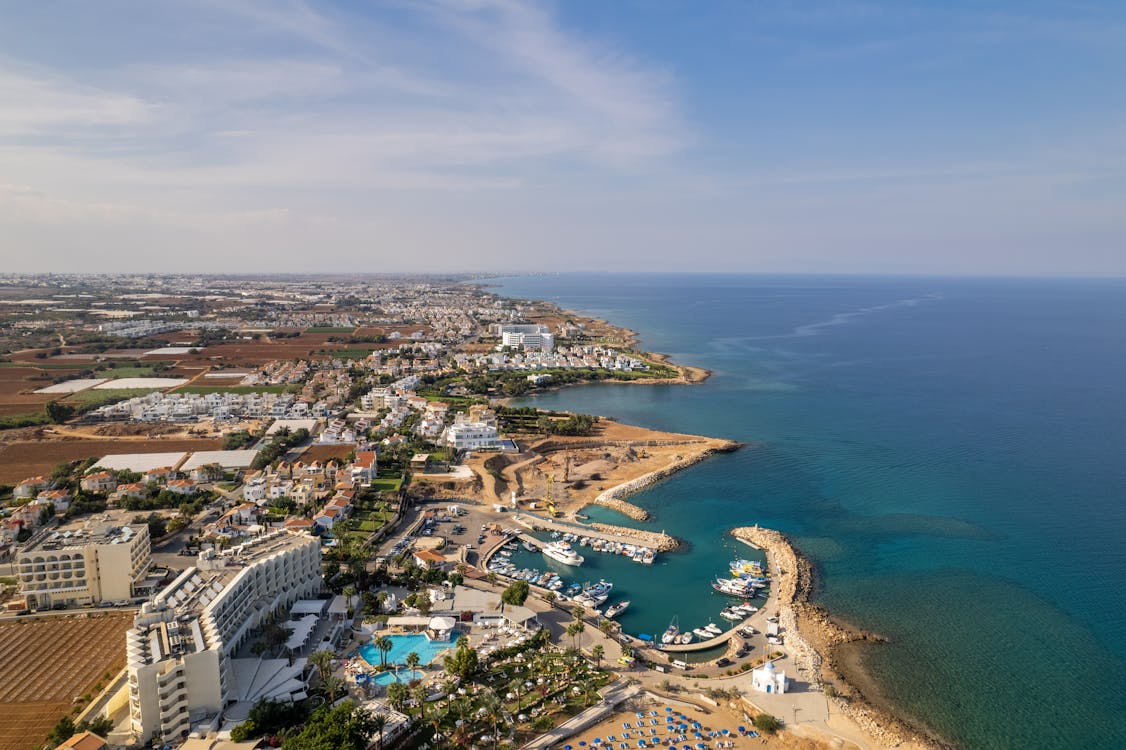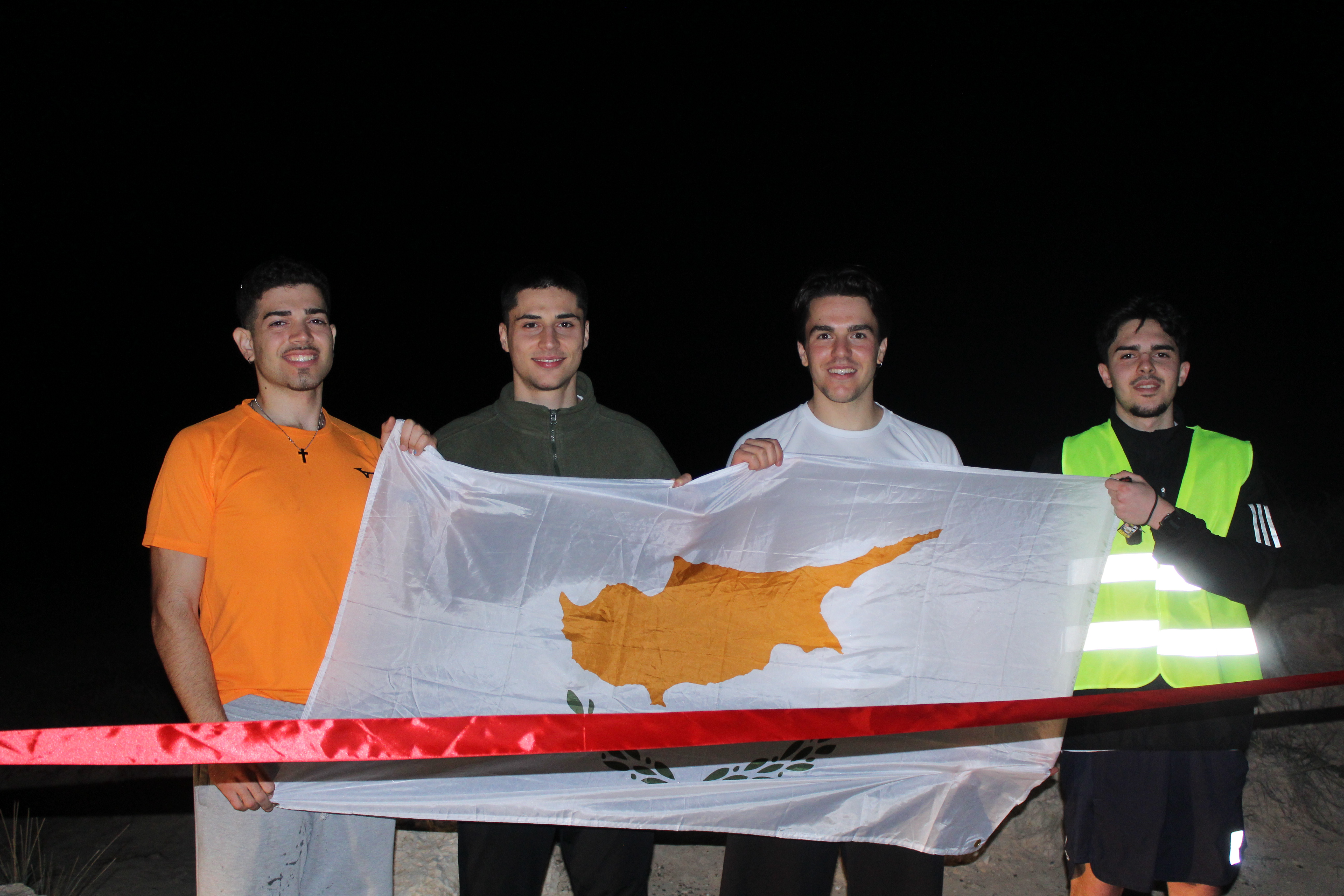Cyprus’ tourism industry set a new record in 2024, surpassing four million visitors for the first time while posting revenues of more than €3.2 billion.
The record came despite geopolitical instability in the Middle East and economic pressures in Europe, underscoring the resilience and adaptability of the island’s hospitality sector.
According to the annual report of the Cyprus hoteliers association (Pasyxe), arrivals between January and December reached 4,040,200 million, a 5.1 per cent increase from 2023, while revenues climbed to €3.209 billion, almost 20 per cent higher than in 2019, the last year before the pandemic.
Tourism’s contribution to GDP was put at 18.3 per cent, with employment in the industry exceeding 62,000 jobs.
President of the Pasyxe Thanos Michaelides said 2024 had been “a year of significant progress for the hotel and wider tourism industry of Cyprus.”
He noted that while the island had broken through long-standing barriers, structural challenges persisted, ranging from unlicensed short-term rentals and competition from the occupied north to high operating costs and staff shortages.
“For us, tourism is a pillar of stability, development and national perspective,” he added.
The rebound was even more striking when placed in context. In 2017 Cyprus attracted 3.65m tourists and earned €2.64bn in revenues.
The following year arrivals rose to 3.93m with receipts of €2.71bn, and in 2019 the record before the pandemic stood at 3.97m visitors and €2.68bn in revenue.
Then the collapse came. Arrivals plunged to 631,609 in 2020 and receipts to €392m. By 2021, however, revenues had climbed back to €1.51bn, before accelerating to €2.44bn in 2022 and €2.99bn in 2023.
With 2024 crossing the four-million mark in arrivals and €3.2bn in receipts, Cyprus has not only fully recovered but surpassed its pre-pandemic performance.
The United Kingdom remained the backbone of the market, contributing 1,373,634 arrivals or roughly a third of the total.
Israel followed with 425,606, while Poland supplied 337,139 and Germany 228,355.
Greece accounted for 183,816, and Sweden 148,995.
In addition, other European markets provided significant flows. Romania with 95,314 visitors, France with 92,818, Austria with 75,261 and Switzerland with 73,946.
Smaller but still important contributions came from Norway, Hungary and the Netherlands.
In this context, the report noted that Scandinavian markets, once weakened, showed renewed strength, particularly for sustainable and thematic tourism.
In parallel, targeted investments in connectivity with Poland and Germany were said to have produced “tangible results,” demonstrating the benefits of market diversification.
Meanwhile, the extension of the tourist season was described as one of the most significant developments of the year.
October, November and December 2024 each recorded their best ever monthly figures, making the autumn and winter period the strongest on record.
In total, 728,255 visitors were counted during January–March and November–December, up from 677,128 the previous year.
The report said this success was the product of improved air links, targeted promotion and the growth of specialised forms of tourism.
Looking ahead, the government’s national tourism strategy 2020–2030, now being updated to 2035, is expected to establish Cyprus as a “comprehensive, sustainable, digitally smart and accessible” year-round destination.
Air connectivity was central to this achievement. Liberalisation of routes and agreements with carriers helped expand Cyprus’ access to key European markets.
Flights to and from Poland and Germany were strengthened, with schedules extended into the winter months. Routes to Scandinavia were maintained throughout the year, supporting the return of visitors from Sweden, Norway and Finland.
At the same time, increased frequency from the UK and Israel provided stability from the island’s two largest markets.
In particular, Paphos benefited from close cooperation with Jet2 and EasyJet Holidays, which helped guarantee winter capacity.
The association stressed that without this network of connections, some newly established, others extended seasonally, it would have been impossible to secure record winter arrivals.
Beyond this, Pasyxe argued that sustaining and expanding such routes will be critical to consolidating the gains of 2024.
Bed occupancy rates offered further evidence of recovery. Across all accommodation, gross annual occupancy in 2024 reached 53.5 per cent, up 4.1 points from 2023.
Hotels averaged 56.6 per cent, with five-star properties recording 61.9 per cent and four-star establishments 56.6 per cent.
Three-star hotels stood at 53.2 per cent, while two-star hotels reached 49.2 per cent, both showing year-on-year gains.
Organised apartments improved to 45 per cent, while tourist villages and traditional houses posted 61.9 and 29.2 per cent respectively.
In total, overnight stays rose to 18.08 million, an increase of 15.6 per cent compared with 2023.
At the regional level, Paphos recorded the strongest performance with average occupancy at 65.6 per cent, while Limassol followed at 59.2 per cent.
Larnaca achieved 57 per cent, slightly ahead of the Famagusta region at 54.6 per cent.
Mountain resorts, traditionally more seasonal, showed solid resilience with 57 per cent, buoyed by demand in the autumn and winter months.
Nicosia, more dependent on business travel, trailed at 36.7 per cent. The report emphasised that while coastal regions remain dominant, the recovery of mountain destinations reflected the gradual extension of the season and diversification of the tourism product.
The breadth of specialised tourism helped support this diversification. Religious tourism was one of the most dynamic areas, with visitors from Lebanon forming a growing segment, often linked to international faith-based events.
At the same time, sports tourism flourished, with Cyprus hosting the Uefa under 17 finals, international cycling races, triathlon competitions, golf tournaments, beach volleyball matches and the ISSF World Shooting Games.
Training camps further boosted arrivals, attracting teams from the UK, Switzerland, Poland, Finland, Belgium, Austria, Germany and Norway, who used the island’s facilities during the winter months.
Moreover, health and wellness tourism gained ground. Cyprus continued to attract medical visitors for services such as plastic surgery and dentistry, offering high-quality treatment at competitive prices supported by excellent infrastructure and specialised professionals.
In turn, wellness tourism expanded as many visitors opted for luxury spas and wellness centres across the island, seeking both relaxation and recovery.
Wedding tourism also continued to expand as Cyprus positioned itself as a Mediterranean hub for destination ceremonies. In addition, conference and incentive tourism regained strength.
According to the annual report of Pasyxe, Cyprus hosted the 14th international space syntax symposium in Nicosia in June, the 20th annual Cyprus summit of economist impact in Engomi in November, and the 2nd Pancyprian conference on climate change and tourism in December.
The Deputy Ministry of Tourism, working with the Cyprus convention bureau, also promoted the island at IBTM World in Barcelona, positioning Cyprus more firmly on the international conference map.
Cruises likewise made steady gains. According to the annual report, the port of Limassol welcomed 106 cruise ships and 109,000 passengers in 2024, reflecting the sector’s gradual recovery and its growing contribution to the local economy.
This momentum, supported by upgraded port infrastructure and targeted promotion, positioned Cyprus as a rising stopover on Mediterranean cruise itineraries.
Globally, Cyprus’ record year mirrored the rebound in international travel. According to UN Tourism data included in the report, worldwide arrivals reached 1.45bn in 2024, almost fully back to pre-pandemic levels. Europe, with 747m international arrivals, stood at 98 per cent of its 2019 level.
Southern and Mediterranean Europe, the region that includes Cyprus, even exceeded 2019 volumes by 6 per cent.
By contrast, Asia and the Pacific, though recovering strongly, remained below pre-pandemic numbers, while the Middle East surpassed 2019 levels by more than 20 per cent.
Institutionally, Pasyxe’s board held nine meetings and three extraordinary general assemblies between May 2024 and May 2025.
Deliberations centred on the renewal of the collective labour agreement, licensing procedures, labour shortages, water management and energy use.
The new four-year labour contract, extended until 2027, was seen as securing stability and “industrial peace” for the hotel industry.
Michaelides said this agreement demonstrated “the maturity and responsibility of the sector” in securing stability for the next four years.
At the same time, labour shortages remained one of the most serious obstacles.
The government’s approval in February 2025 of a framework for employing foreign workers was highlighted in the report as an important step towards alleviating staffing gaps.
Water scarcity also prompted debate, with the association calling for the installation of small desalination units in hotels, backed by grants, and stressing the importance of integrating renewable energy.
Swimming pool regulations were also reviewed, with Pasyxe submitting proposals to balance safety and quality with operational flexibility.
Beyond these operational issues, the report highlighted competition from the occupied north, where lower operating costs and weaker regulatory oversight pose challenges for licensed operators in the republic. Moreover, the unchecked growth of unlicensed rentals across the island was described as a risk to the sector’s real economic footprint.
On fiscal policy, the report referred to the ongoing discussion about green taxation and the need for a modernised framework that supports sustainable investment.
In this respect, Pasyxe reiterated that it remained a “constructive partner of the state,” ready to support reforms that would enhance the long-term resilience of the sector.
Externally, Pasyxe enhanced its visibility through participation in international fairs such as WTM in London and ITB in Berlin.
Domestically, it staged the 46th hotel conference in Limassol in February 2025, accompanied by a products and services exhibition.
Looking further ahead, Cyprus will host the 91st HOTREC general assembly in October 2025, coinciding with its EU Council presidency, offering what the association described as “a unique opportunity to showcase Cypriot hospitality at a European level.”
Summing up, Michaelides stressed that the next great challenge was moving to a modern model of all-year tourism.
“The sustainability, the use of artificial intelligence, the smart targeting of audiences and innovation are no longer options, but necessary conditions,” he said.
Michaelides added that revising the national tourism strategy up to 2035 would be vital to match the dynamism of the sector and the opportunities it offers.







Click here to change your cookie preferences